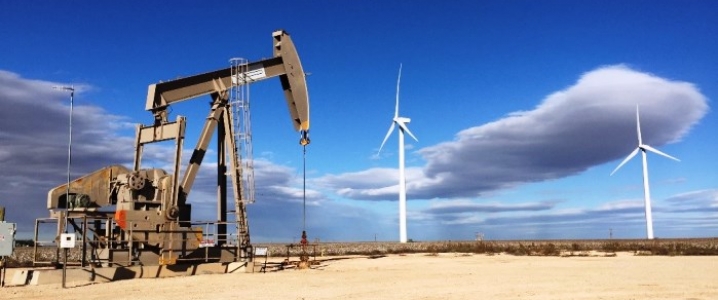Is Peak Permian Only 3 Years Away?

The world’s hottest shale basin, the Permian, is leading the second U.S. wave of tight oil production growth and will continue to do so for years to come, all analysts say.
However, signs have started to emerge that the relentless intensification of drilling leads to diminishing returns, Simon Flowers, Chairman and Chief Analyst at Wood Mackenzie, said in an article this week. Pumping twice as much sand as usual into Permian wells and drilling longer laterals doesn’t deliver commensurate volumes of oil, Flowers notes.
“Drilling costs rise exponentially with depth, and there’s a suspicion that longer wells are hitting a cost efficiency ceiling,” WoodMac’s chief analyst writes.
Moreover, after the early production-exuberance stage, drillers are now much more focused on delivering profits and higher profit margins. They now favor quality over quantity, and value over volumes.
“Might the Permian be reaching the limits of well size and design? Maybe—as Star Trek’s Scotty might observe of an underwhelming high intensity completion ‘you cannae change the laws of physics, Jim’,” Flowers says. But WoodMac suggests that drillers could ‘change the laws of physics’ and that these signs of setbacks may actually be growing pains.
The energy consultancy’s Director of L48 Research, Rob Clarke, argues that there are two basic and very sound reasons that the fading lateral drilling and proppant metrics might be just growing pains. One is much more advanced proppant placement, and the other is the oil majors’ move into the Permian, set to change things.
“Now, pinpoint frac technology can place the proppant exactly where it’s wanted. Science is also being applied to identify the most effective proppant grain size and shape as well as drill bit design and fluid chemistry, all with the aim of boosting EUR,” according to WoodMac.
In addition, ExxonMobil significantly boosted its Permian position earlier this year, and Exxon has “global expertise in extra-long laterals—including a 39,000 footer in Russia,” WoodMac says.
ExxonMobil has already drilled a 12,500-foot well in the Permian and “will no doubt ramp up longer still to test the diminishing returns theory,” Clarke noted.
Now the next challenge will be to deliver an effective completion of such a long well.
“The application of the Majors’ capital and industrial approach will test whether the thousands of wells to be drilled in the future enable the Permian to deliver on the bold growth targets,” WoodMac said.
Two months ago, Wood Mackenzie warned that as drillers are set to continuously develop the hottest U.S. shale play, they may soon start to test the region’s geological limits. And if E&P companies can’t overcome the geological constraints with tech breakthroughs, Permian production could peak in 2021, putting more than 1.5 million bpd of future production in question, and potentially significantly influencing oil prices.
Apart from geological constraints, other factors that could affect Permian growth are increasing service costs and potentially persistently low oil prices.
While oil service margins have increased for oil field service providers such Schlumberger and Halliburton, oil producers, on the other hand, face cost pressure, and “higher well costs may force additional discussion on capital discipline going into 2018, which could be a good thing for the overall supply and demand balance,” BTU Analytics said earlier this month.
At the end of September, Moody’s warned that even if average drilling and completion costs have declined significantly in the past two years, “drillers will be hard pressed to further reduce drill-bit finding and development costs, since drilling efficiencies may be offset by higher service costs.” North American oil producers will need WTI at over $50 a barrel in order to achieve “meaningful capital efficiency”, Moody’s said.
Pioneer Natural Resources, for example, continues to believe in the Permian, but it thinks that the U.S. shale patch is heading toward hitting the ceiling of efficiency gains from larger frackings.
“In the U.S., we are essentially using a sledgehammer approach. We are using larger volumes or sand and fluids and pumping at higher rates,” Pioneer’s CEO Tim Dove said at the Oil & Money conference in London, as quoted by Platts.
“At some point you reach a peak on logistics, limits on sand, water volumes… that’s where we are getting to, [although] we’re not quite there as an industry,” Dove noted.
Still, the expertise of the majors, as well as science and tech breakthroughs in proppant use, may help the Permian outgrow its growing pains faster than expected.
Related News
Related News

- Keystone Oil Pipeline Resumes Operations After Temporary Shutdown
- U.S. House Passes Bill to Reverse Biden's LNG Pause
- Biden Administration Buys Oil for Emergency Reserve Above Target Price
- Enbridge to Invest $500 Million in Pipeline Assets, Including Expansion of 850-Mile Gray Oak Pipeline
- Williams Delays Louisiana Pipeline Project Amid Dispute with Competitor Energy Transfer
- Evacuation Technologies to Reduce Methane Releases During Pigging
- U.S. Regulators Approve Mexico Pacific LNG's Saguaro Connector Pipeline
- Editor’s Notebook: Nord Stream’s $20 Billion Question
- Enbridge Receives Approval to Begin Service on Louisiana Venice Gas Pipeline Project
- Russian LNG Unfazed By U.S. Sanctions




Comments